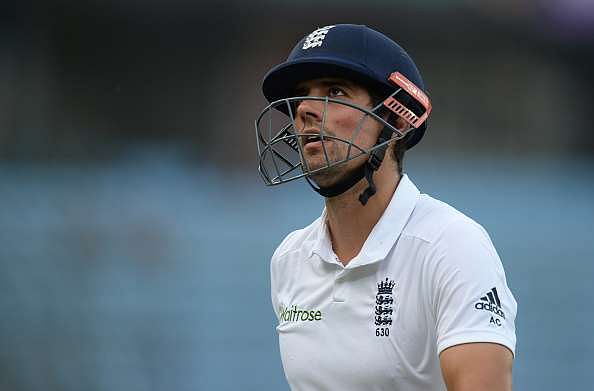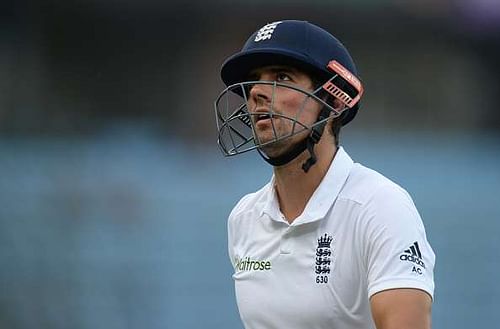
India vs England 2016: Decision Review System talking points on Day#1

Once the BCCI had given the nod for the Decision Review System to be introduced in India, the whole country had its eyes fixed on it to see how the trial goes.
The system was finally put to Test here on Wednesday in the first Test which is being played at Rajkot between England and India and it didn’t disappoint much.
It all started off, well almost after the first-hour mark. Before that Alastair Cook had all the luck going his way from the toss to two drop catches. Cook was just settling in when he missed a straighter one from India’s left-arm spinner Ravindra Jadeja. The delivery was quite short and the England captain tried to play to square leg. Now it’s always quite risky to play Jadeja with the closed face of the bat as the ball thudded on to his pads.
Cook decided not to review his leg-before decision
At the very first instance, it looked like the delivery was going down leg but astonishingly umpire Chris Gaffney raised his finger to show him the door. Cook asked his non-striking partner and debutant, Haseeb Hameed if he would ask for a review, but Hameed too convinced his skipper that the ball was heading for the stumps. Cook left the crease without much fuss but then when Hawk-Eye was used to see where the ball was heading, it revealed that it was missing the timber.
Also Read: Blooper Squad: India's slip cordon drop three on the trot in Rajkot
What might have prompted Cook to walk off was the fact that he believed he had shuffled too much across his stumps, but that wasn’t the case.
The 19-year-old, Hameed then found himself dealing with another leg-before-wicket decision. He was trapped in front by a Ravichandran Ashwin turner as he thrust his pads in front to negate the spin. This time, however, vice-captain Joe Root who was batting with the youngster encouraged him to go for the review.
The ball-tracking showed that the delivery hit him right in line and was heading for the left-hander’s off stump. The third umpire had no choice but to stay on with the on-field decision and give Hameed out.
India finally made their first use of the system just before tea
India finally made their first use of the system just before tea, a session which saw the hosts going wicket-less. Speedster Umesh Yadav got one to swing in and past the inside edge of Joe Root and all the fielders close in rose up in unison. The appeal seemed to be a close one but Kumar Dharmasena who had a torrid time in Bangladesh ruled it against the home side.
Virat Kohli instantly went upstairs to see if the decision could be overturned. But it was not to be. Once again Hawk-Eye was put to the test and it showed the ball was just hitting the leg stump, not enough to overturn the original decision of a not-out. Root who was then batting on 92 went on to get his hundred, in turn, becoming the first batsman to get to the triple figure mark visiting India since Michael Clarke in February 2013.
Well, just before the game Indian captain Kohli had said they were not paying much attention to the system and instead concentrating more on the game.
“Well, there is no rocket science on DRS. As a cricketer you understand, you have a fair idea of where the ball has hit the pad, whether it has pitched in line or hit in line. Those are pretty basic things in cricket. You don’t have to necessarily go through a course for DRS,” said the home team captain on the eve of the series opener at the SCA stadium.
“I think we have observed enough watching on TV how DRS is used. It really depends on what the bowler and a wicketkeeper, most importantly, think about the particular event or if a referral has to be made. It is pretty simple. It’s nothing that we are focusing too much on. It just gives you another opportunity to check on a decision if you feel is not right. And I think that’s pretty fair.”
With four more days to go, one would expect more excitement surrounding the system and what it throws up.